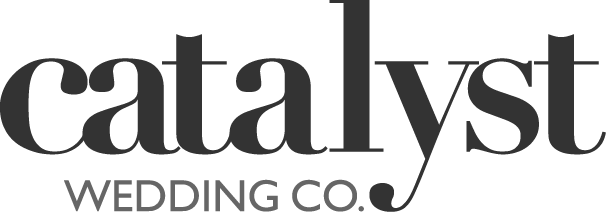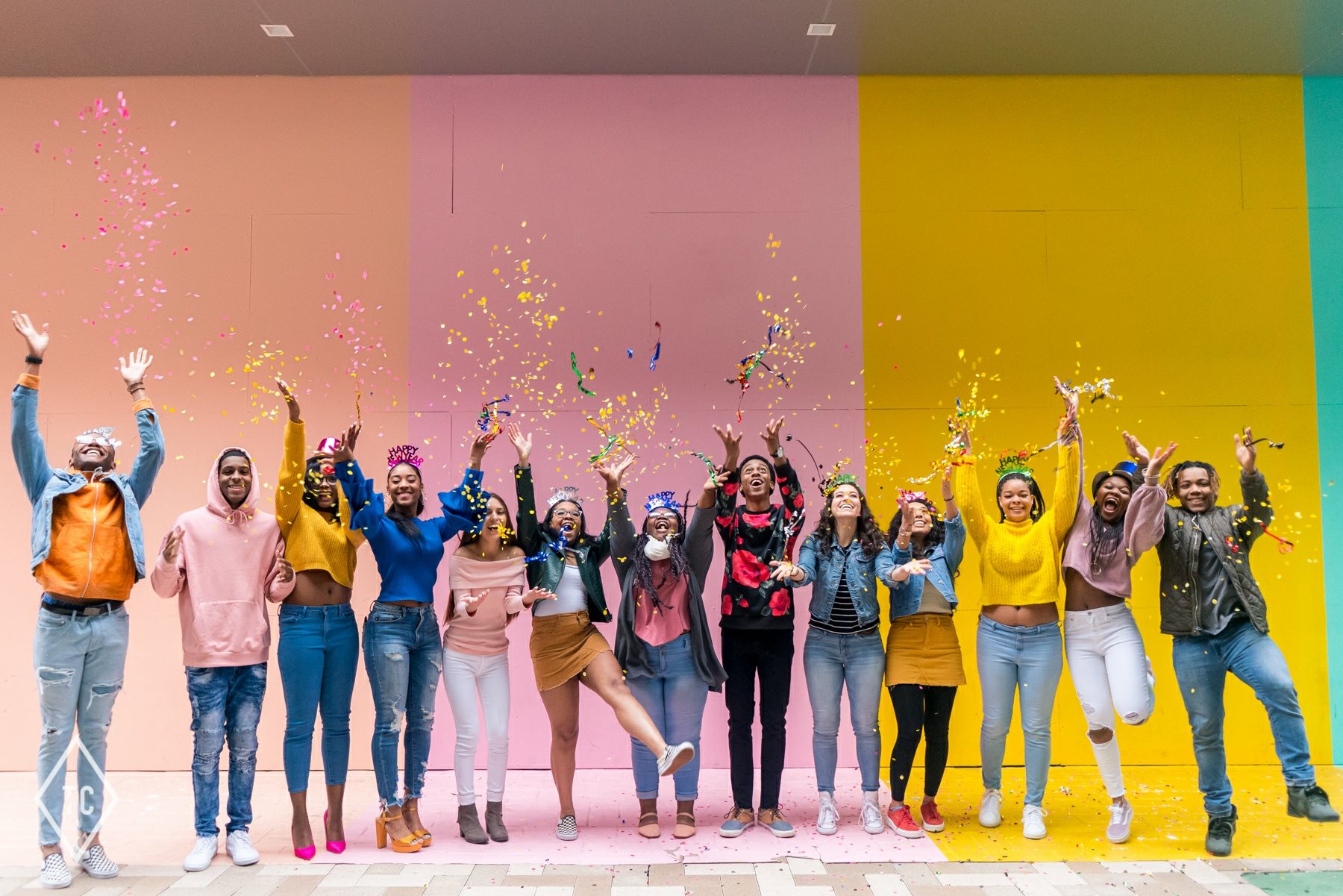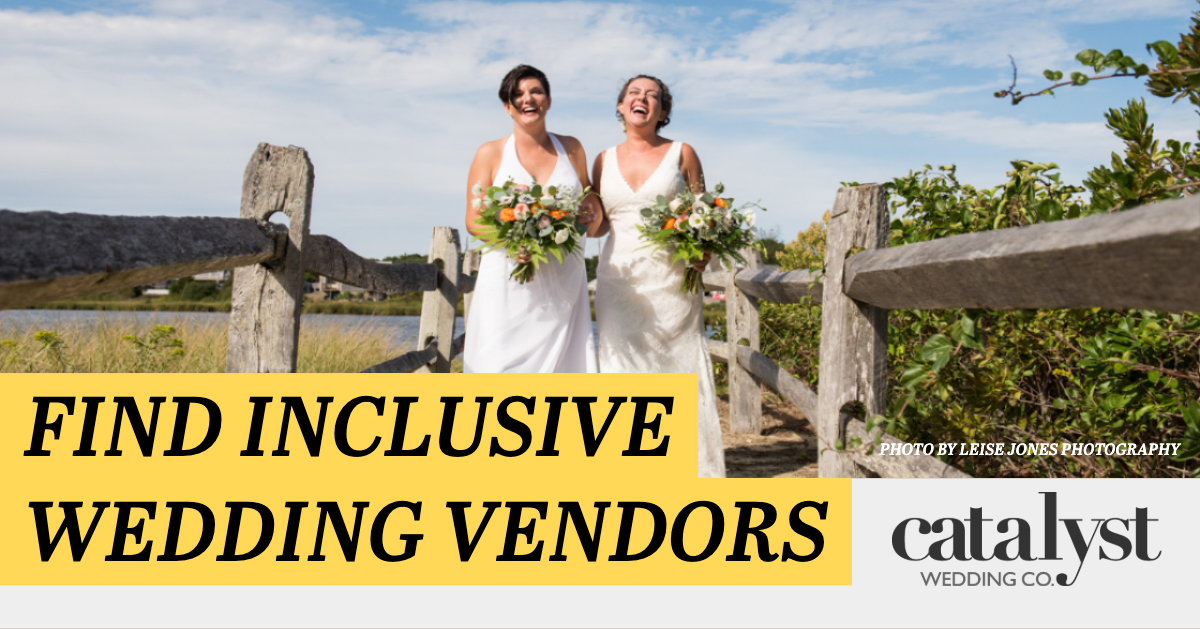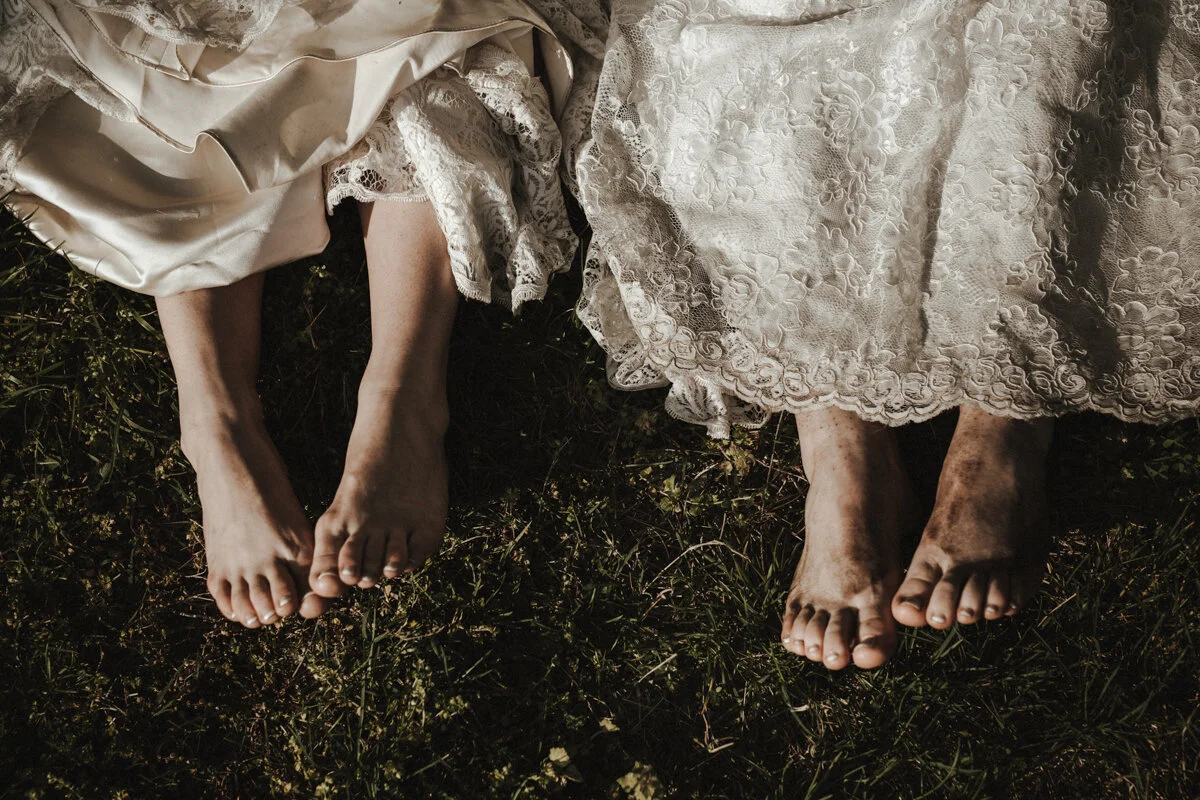People Are Not Props // How to Avoid Tokenism in Your Portfolio
/“Diversity requires a change in attitude and mindset, as well as conscious self-check to avoid making decisions based on unconscious biases. Diversity also should not be thought of a standalone program, but rather as a cultural movement”. —Vivien, “What’s Better: Meritocracy or Tokenism?”
How to diversify portfolios is a topic that comes up frequently in photography groups on Facebook. It generally looks something like this: “I want to start photographing gay weddings but don’t have any gay clients… what do I do?” or “I need make my portfolio less white/straight… should I do a model call?” A few of those conversations have resulted in white people getting called out for tokenizing members of marginalized communities and, frequently, those who were called out responded with mild (or not so mild) outrage and wondered how to get away from their straight white client base if they can’t do model calls for LGBTQ2S+ folks or POC to expand their portfolios.
I turned to Google in the hopes of finding some articles that could help unpack the topic of inclusion vs. tokenism. I wanted to approach this topic in a way that amplifies voices of the people directly affected, those who experience being tokenized, as opposed to my own white, hetero, cis voice. I discovered, however, that most articles tackle tokenism from either the writing desk or the board room. There is very limited information regarding tokenism as it pertains to fine arts generally and photography portfolio building specifically. This article is an attempt to compile the information I did find and present it in a way that is applicable to the photography industry. It might seem straightforward and obvious to some, but I think it is needed based on the social media conversations previously mentioned.
A special thanks to all the amazing photographers who contributed their voices to this post; this article was really written by them.
What Is Tokenism?
Tokenism is superficial; it is diversity without a commitment to inclusivity. It is a show where marginalized people are used as props for the benefit of the photographer.
Youth Friendly defines tokenism as “The apparent involvement of a group that hides a lack of real change or real impact on the work we are involved in.” When applied to the photography industry, we need to ask ourselves what real change or impact our actions are having, or that we hope they will have. If the “real change” you want to see is simply getting more gay clients, doing a model call so you can show gay couples on your website is engaging in tokenism. That goal is superficial and is meant to benefit you, the photographer, by getting you more clients. It is not a goal that benefits the marginalized communities you are targeting. If the real change you want to see is queer folks experiencing equal access to services and equal representation in the wedding industry (for example), then your goal isn’t really to diversify your portfolio but to support LGBTQ2S+ rights and challenge heteronormativity.
So, what is your end goal and who does it benefit?
“I will feel used if someone takes my wedding just because I am Indian and they want to expand their portfolio…If I am expanding my portfolio just to increase my business, isn’t it unfair? Intention matters.” —Monali Mahedia, Monali Mahedia Photography
More Than Face Value
Making sure that your business is truly inclusive and not just engaging in tokenistic representation means ensuring you approach all areas with the goal of diversity. If you only care about diversity in your portfolio when it is visible to others (ie. models vs. MUAs), you are engaging in tokenism.
“This topic is way more complex than we think, and the way minorities interpret ‘representation’ has to feel like it’s a two-way street, and not like we are being used as a trophy.” —Loreanne Varon, Loreanne Varon Photography
Don’t Stereotype
Obviously. This shouldn’t even have to be said… but I’m going to say it anyway. Don’t stereotype your clients or models. Don’t ask them to dress/act so they appear “more” or “less” gay/black/latinx/etc. Don’t make people into tropes. Be respectful, don’t be racist, and don’t pigeonhole folks.
“Often poc and other minority groups get dropped into white cis Hetero/ableist narratives. It’s like the color of the bride changes but the scene stays the same. That’s not diversity. Allow various cultures and communities to express themselves and help elevate THOSE stories. Tell the stories of tea ceremonies well. Change your language to be inclusive: Don’t call Indian weddings ‘crazy’ — they won’t ever be like white western weddings so don’t compare, allow them to be what they are. Tell the stories of button blankets and grandmama doing the electric slide well. Refrain from judging decor or anything else when a couple is on a budget, don’t allow classism to dictate how we tell stories. Allow people to be fat, resist the urge to minimize them and photoshop their bodies - assume they love their fat bodies and recognize how social beauty standard play a role in how you photograph different body types. Show off Japanese bridal kimonos and Korean hanboks well — give it the attention you’d give to a Vera Wang dress!” —Kendra Ellis, Love Tree Photography
You’re Not Owed a “Yes”
It is not the job of marginalized folks to improve your business model. It is not the job of marginalized folks to make you more appealing to other marginalized folks. It is not the job of marginalized folks to say yes to your model call. No one owes you anything.
“'I’m not a token every time,' Wendy Xu said, 'just enough of the time.' Enough times to make you wonder if it’s every time. —Morgan Parker, “Tokenism May Cause the Following Side Effects”
Actively Listen
Recognize that one marginalized person doesn’t speak for all marginalized people. White straight folks aren't expected to share the same opinion, but often members of marginalized communities are expected (by non-marginalized folks) to share one homogeneous viewpoint. Don't do this. If one person thinks your model call is worded well but another person thinks it is tokenizing, don’t ignore Person Two because you like Person One’s opinion more. Listen to Person Two and address their concerns without getting defensive.
“…I think it's so important that in situations like that white cis straight people stay in their lane. It doesn't really matter if this [ad] isn't offensive to you. If a person of color or queer person says this feels tokenizing, we need to believe them and decide if/how to adjust… Sometimes we show our whiteness and end up actually isolating people of color further by asking them to be a part because we need folks of color on our website.” —Kevin Lowery, Kevin Lowery Photography
Educate Yourself
It’s important to note that while listening to marginalized folks is essential, it is also imperative that you recognize that it’s not up to marginalized folks to educate you. It’s up to you to learn about tokenism and how to avoid it. While I acknowledge at the beginning of this article that there are not many resources regarding tokenism in the photography industry, there is enough collective information on tokenism available on the internet for people to educate themselves.
“[People of color] are expected to educate white people as to our humanity. Women are expected to educate men. Lesbians and gay men are expected to educate the heterosexual world. The oppressors maintain their position and evade their responsibility for their own actions.” —Audre Lorde, “Age, Race, Class and Sex: Women Redefining Difference” in Sister Outsider: Essays and Speeches
Promote Other Photographers
This might seem counterproductive but amplifying the voices of marginalized folks is just as, if not more, important as having a diverse representation of folks on your website.
“For diversity to have impact and mean something within the creative industries, we have to acknowledge that so often within these spaces - where we are aiming to connect with culture daily - that we miss the chance to be more nuanced, that we miss a chance to check micro-aggressions directed towards people of colour and that we miss the chance to challenge the spaces we work in… It’s giving your space to those in need and doing more pro-bono work for cultural causes. It’s giving time and money to specific groups… It’s making a commitment to dismantle privilege within the space you work in everyday and checking your own privilege at the door, daily.” —Lemara Lindsay-Prince, “Diversity breeds tokenism, what we need is inclusion: a post-election view on the US creative industry”
It's Not About You
Don’t take on sessions or events that you aren’t prepared for simply because you “can’t pass up the opportunity”.
“This annoyingly happens on a daily basis. Lots of people willing to work for almost nothing to shoot the "color" of an Indian wedding — though they are woefully unprepared and uneducated about the culture.” —Charmi Patel Peña, Charmi Peña Photography
Again, It's Not About You
Remember that, as much as you’re doing this because you want your business to be inclusive and a positive force in society, this ISN’T ABOUT YOU and it’s not supposed to be easy. You don’t get cookies for wanting to have a range of folks represented in your portfolio. You don’t get cookies for wanting to run a business that doesn’t discriminate. You don’t get cookies for being a decent human being.
That doesn’t mean you can’t feel discouraged, just don’t place that feeling on marginalized folks. It’s natural to get disheartened if you hold model calls and don’t get the response you want, but “roadblocks” are good moments for reflection. Why didn’t you get the response you wanted? How can you help empower marginalized people in your community outside of photography? Look for opportunities to volunteer with ESL students or community organizations. Take the time to celebrate diversity in your community... Show you are an ally first and a photographer second. Show that people can trust you and that you are there for them as individuals, not there scouting for faces to fill up your website.
“What people shouldn’t do: skip out on the work of reconciliation/diversification and just hire models and bypass the real work of telling the stories of minority groups to benefit their profile and turn a profit. What you should do instead: Make friends with older people in the community, make friends with people with physical disabilities, with Asian people, with Indian people and First Nations people. Make friends with Orthodox Jewish people and Muslim people and Buddhist people. Make friends with queer people and trans people and gay and lesbian people. And as you connect with a diverse group of people on a heart level you will discover your work naturally diversifies. Not only that but as you develop a relationship with these people you’ll be better equipped to help them tell THEIR stories.” —Kendra Ellis, Love Tree Photography
Diversifying your portfolio is not a one-off act where you photograph a few people, put their photos on your website, and then go watch a movie and wait for the session requests to roll in; it requires a commitment to inclusivity beyond photography. Diversifying your portfolio means nothing if you are actively acting against marginalized folks on a socio-political level. If you want to make sure LGBTQ2S+ folks are represented on your website but you vote for someone who doesn’t support trans rights, your portfolio diversity means nothing and is tokenizing. If you want to make sure indigenous folks are represented on your website but you don’t support land claims, your portfolio diversity means nothing and is tokenizing. If you want to make sure black folks are represented on your website but you respond to #blacklivesmatter with #alllivesmatter, your portfolio diversity means nothing and is tokenizing. Your client or model doesn’t stop being marginalized when they leave your photo session, and your support for them can’t end there either.
“Having a portfolio full of diverse human beings should be a way of thinking, a way of life. Not something that becomes ‘cool’ and has the potential to fade away when something else takes over. We play a powerful role in our society and it’s about time we acknowledge that. To be clear, I fully support a much more diverse and inclusive visual culture; especially in weddings. I think it’s important we hold each other accountable to make sure it’s not just a fad.” —Kat Rizza, Kat Rizza Photography
Some Final Words of Advice
“Diversify your life and your portfolio will follow.” —Raquita Henderson, Pinxit Photo
“Tread lightly tagging #blackbride #blacklove etc. unless it's throughout your portfolio. Otherwise, it's just a token client in your portfolio.” —Tomayia Colvin, Tomayia Colvin Education
Instead of doing a model call for a specific demographic, consider adding a “priority given to” sentence.
“When I do calls I always end it with something like "priority given to IBPOC (Indigenous, Black, People of Colour) and LGBTQ/genderqueer/non-binary folx" and field inquiries accordingly.” —Yuli Scheidt
A huge thanks to the amazing photographers who contributed to this article:
Charmi Patel Peña, Charmi Peña Photography (charmipena.com)
Kendra Ellis, Love Tree Photography (lovetreephotography.ca)
Kevin Lowery, Kevin Lowery Photography (kevinlowery.com)
Kat Rizza, Kat Rizza Photography (katrizzaphotography.com)
Loreanne Varon, Loreanne Varon Photography (facebook.com/loreannevaronphotography)
Monali Mahedia, Monali Mahedia Photography (monalimahedia.com)
Raquita Henderson, Pinxit Photo (pinxit.photo)
Tomayia Colvin, Tomayia Colvin Education (tomayia-colvin-education.teachable.com)
Yuli Scheidt (yulischeidt.com)
NICOLA REIERSEN
Nicola Reiersen is a lifestyle photographer based in Victoria, BC, with a passion for helping people celebrate and document their lives, from everyday moments to milestones. She currently lives on unceded Lekwungen territory with her husband, bulldog, and rescue cat.
























